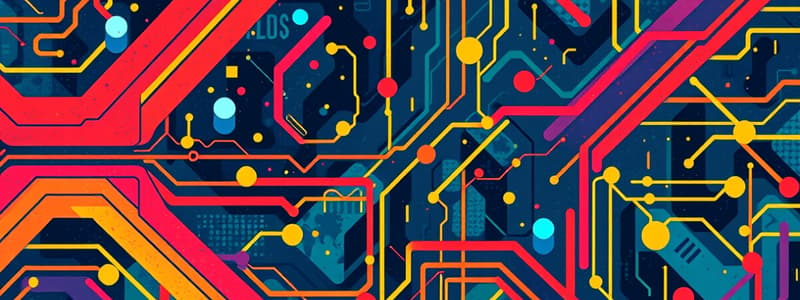Podcast
Questions and Answers
What is the primary purpose of data processing?
What is the primary purpose of data processing?
- Transmission of data
- Manipulation of data into a more useful form (correct)
- Creation of data
- Storage of data
What are the main components of the data processing cycle?
What are the main components of the data processing cycle?
Input, Processing, Output
Electronic data processing only includes mechanical equipment.
Electronic data processing only includes mechanical equipment.
False (B)
What is Business Data Processing (BDP)?
What is Business Data Processing (BDP)?
Which of the following operations is NOT part of data processing?
Which of the following operations is NOT part of data processing?
What does 'batch processing' refer to?
What does 'batch processing' refer to?
Real-time processing allows for immediate response to data activities.
Real-time processing allows for immediate response to data activities.
An operation that takes two or more sets of data and merges them is called __________.
An operation that takes two or more sets of data and merges them is called __________.
Which of the following methods of processing data is considered the most complex?
Which of the following methods of processing data is considered the most complex?
Flashcards are hidden until you start studying
Study Notes
Introduction to Data Processing
- Data processing involves the manipulation of data to convert it into a more useful form.
Data Processing Cycle
- Consists of five main stages: Input, Processing, Storage, Output, Distribution.
Categories of Data Processing
- Mechanical Data Processing: Combines manual procedures and mechanical devices like typewriters and calculators.
- Electronic Data Processing: Involves interconnected devices such as computers for processing data.
Areas of Data Processing
- Business Data Processing (BDP): Focuses on establishing, retaining, and processing business data to produce useful information.
- Scientific Data Processing (SDP): Involves handling limited volumes of input with complex logical or arithmetic calculations.
Data Processing Operations
- Recording: Transferring data onto documents or forms.
- Verifying: Checking recorded data for accuracy, given that recording is often manual.
- Duplicating: Reproducing data across multiple documents.
- Classifying: Categorizing data into various groups.
- Sorting: Arranging data in a specific order.
- Calculating: Performing arithmetic manipulations on data.
- Summarizing and Reporting: Condensing data and presenting conclusions in a meaningful format.
- Merging: Combining multiple sets of sorted data based on a common key.
- Storing: Keeping similar data in files for future reference.
- Retrieving: Accessing stored data when needed.
- Feedback: Comparing outputs against pre-defined goals to evaluate performance.
Methods of Processing Data
- Batch Processing: Involves collecting data or programs into groups for efficient serial processing.
- Online Processing: Refers to processes controlled directly by the computer's CPU.
- Real-time Processing: Enables immediate data processing and response, impacting the outcomes of activities.
- Distributed Processing: Connects remote terminals to a central computer system, facilitating inquiries and processing jobs.
Studying That Suits You
Use AI to generate personalized quizzes and flashcards to suit your learning preferences.




